One is a beautiful amalgamation of fragility, poignancy, irreverence and razor-sharp wit. The other is a breathtaking journey through a Victorian metropolis that reflects on the inescapable pervasiveness of bigotry, prejudice, racism and intolerance. Meet the cinematographer behind “Fleabag” and “Carnival Row”.
Continuing the ongoing series of interviews with creative artists working on various aspects of movie and TV productions, it is my pleasure to welcome Tony Miller. In this interview he talks about the beginning of his career shooting documentaries, the transition of the industry from film to digital, various facets of the role of a cinematographer, and choosing his projects. Around these topics and more, Tony dives deep into his work on the first season of “Carnival Row” and two seasons of “Fleabag”.
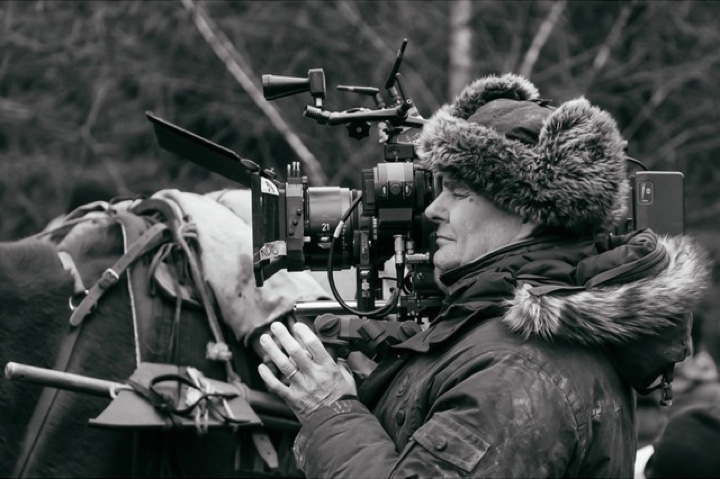
Kirill: Please tell us about yourself and the path that took you to where you are today.
Tony: I studied drama at Bristol university, as I thought that I wanted to be an actor but soon realised it was not my bag and I found myself drawn to cinematography.
When I left university, I self-funded a film documentary about the student uprising in Burma. I crossed the border illegally into Burma in 1988 at age 22 and filmed the first big genocide in which thousands of students were killed, and then crossed back with the film footage.
It was a big risk, but it helped kick-start my career, and I landed a big Channel 4 commission to go back and make a full one-hour documentary.
After the Burma experience, I spent 18 months filming a portrait of whale expert Dr Roger Payne. I then ended up shooting documentaries for the next 12 years, many were anthropological and that was an amazing time. There was a British tradition of verité documentary filmmaking and I was very lucky to join the tail end of it. I travelled with the same crew for about 9 months a year and was booked up often a year ahead. All was shot on film. By 26 I had been Emmy nominated and Emmy awarded.
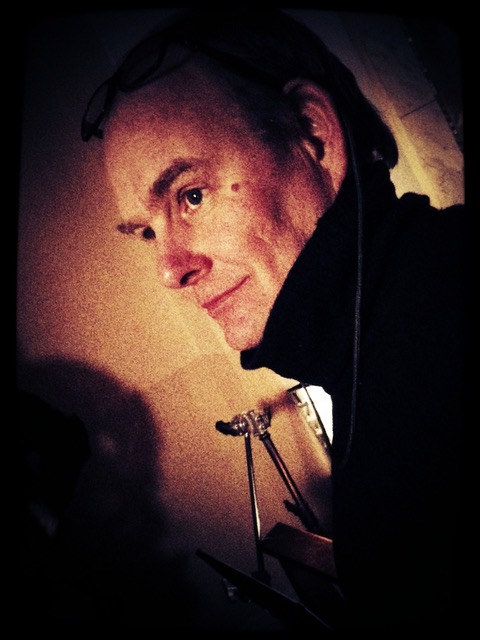 I think that what it taught me was how to light with what I had. How to shoot handheld. What mattered and how to cut it in your head – work out what you needed to tell the story. You didn’t have a second chance or take. You really had to cover things very quickly and find the emotion and drama in how you shot those images. I found that it was a wonderful school for cinematography. All my heroes – Chris Menges, Roger Deakins, Robert Richardson had started in this way. (They all continue to insist on operating by the way).
I think that what it taught me was how to light with what I had. How to shoot handheld. What mattered and how to cut it in your head – work out what you needed to tell the story. You didn’t have a second chance or take. You really had to cover things very quickly and find the emotion and drama in how you shot those images. I found that it was a wonderful school for cinematography. All my heroes – Chris Menges, Roger Deakins, Robert Richardson had started in this way. (They all continue to insist on operating by the way).
Film was a craft and when you did not see it processed for some weeks you had to know exactly what you had shot. So, you shot tests – multiple tests when you had down time and worked out what latitude you had – what made things look more contrasty… What stock to use when the light was harsh.
Film was an expensive commodity, so you thought carefully about what you shot.
At some point I started shooting commercials, and then I started to be offered drama and fiction work. By my mid-30s, I realized that I didn’t want to be traveling around the world 9 months a year. I did my first big TV drama when I was 32, and my first movie a few years later. However, shooting fiction I soon realised that I was still often away 9 months a year!
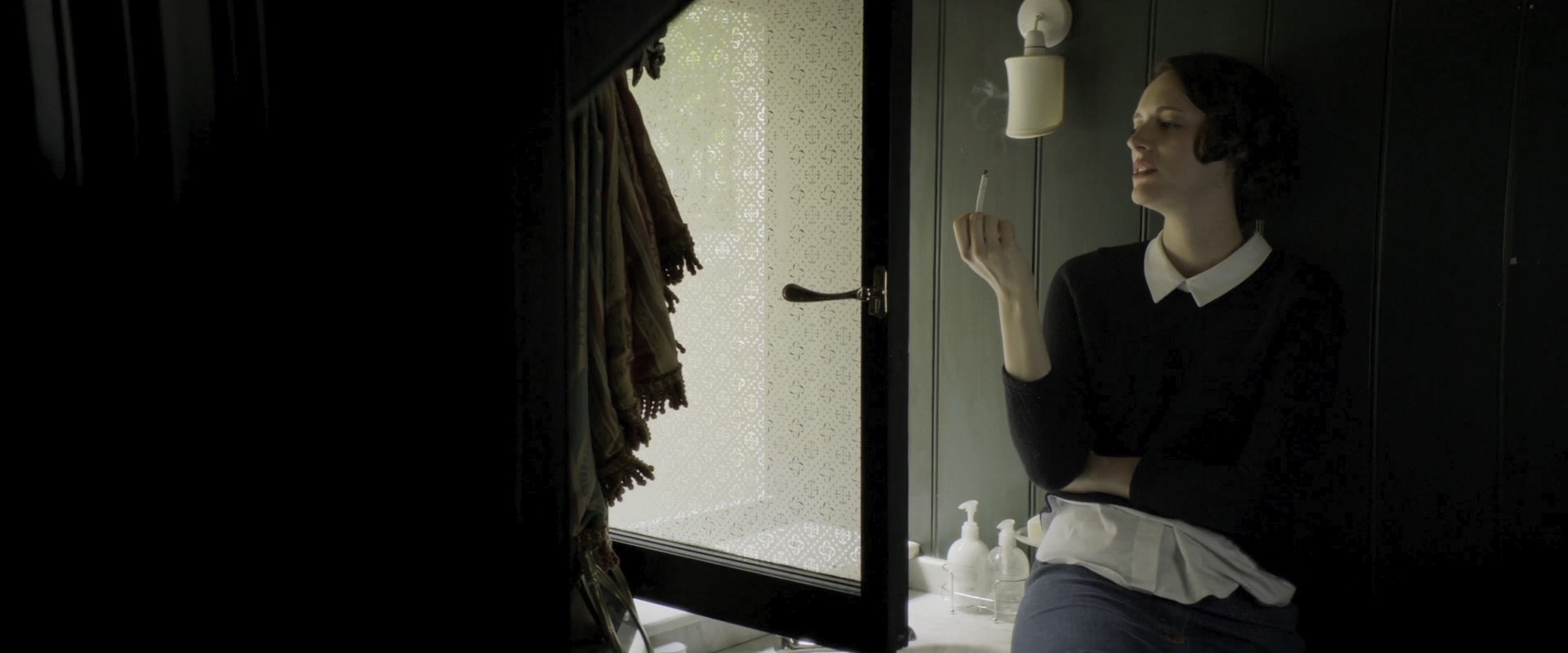
Cinematography of “Fleabag” by Tony Miller.
Kirill: Is there anything that still surprises you when you join a new production?
Tony: I’m always nervous the first few days, and I’m amazed how much there is still to learn. Every project is challenging, it is what makes it fascinating. I think if I felt it was easy, I wouldn’t do it anymore.
It’s still remarkably challenging on so many levels and the opportunity to do something new and different and sensitive is always there. Human nature is vast and so is underscoring the drama with light and a camera.
And on another level, you’re dealing with politics which is such a big part of our job. The bigger the production and the bigger the budget, the bigger the politics gets. Politics is a tricky business! You work with directors who are all very different and your relationship is always a close one. I’m continually surprised and fascinated by what we do.
Kirill: You mentioned that you started back in the days of film as medium, and nowadays digital is almost everywhere. Does it feel sometimes perhaps overwhelming how fast that technology is evolving in last 5-10 years?
Tony: Yes, it does. I’ve talked a lot at various events – BSC and Cameraimage about HDR and how it will take over all of our homes. I think it’s wonderful. I used to hate it, but after having seen “Roma” in HDR and also in a theatre, I thought that HDR looked more amazing and had more depth. I have now done six productions in that format and adapted to some degree how I shoot for HDR.
It is in a way a metaphor for how fast change comes at us these days. You have to keep up with the technology, but I have a crew that does some of those things for me.
But digital has opened the realm of cinematography from a niche profession that used to have maybe 30-40 DPs in Britain who were working at a high level, to now around 400-500. There are other reasons for it, such as people coming here from Europe and everybody seeming to want to shoot in England, but fundamentally it has made the craft of cinematography far more accessible and I think that is a great thing.
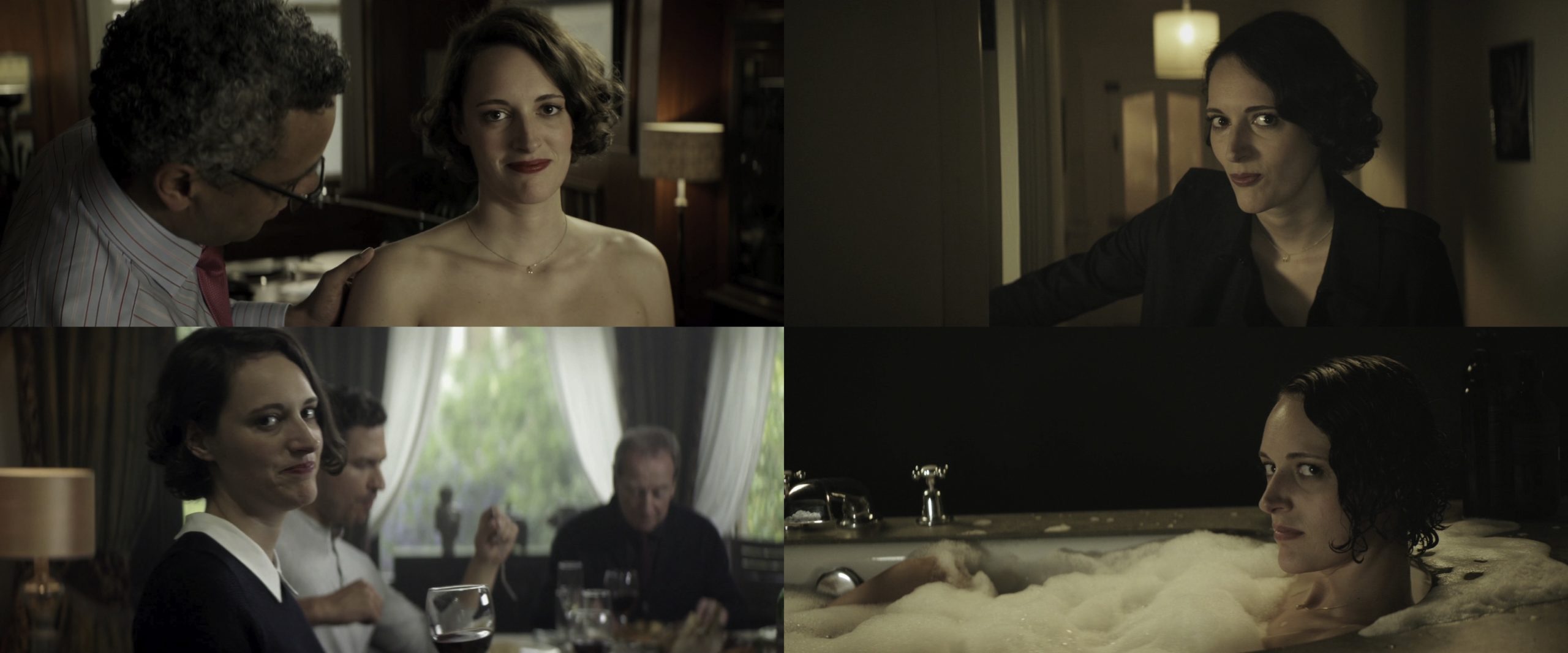
Breaking the fourth wall on “Fleabag”, cinematography by Tony Miller.
Kirill: How do you see the balance between the artistic side of what you do (finding the right way to tell that story) and the technological side of it (keeping track of all the latest cameras, gadgets and software)? Is one more important than the other for you?
Tony: But it’s all about the artistry. It’s all about how you read the story, how you tell the story, how you underscore the story, how you reveal the emotional beats. There are all the key elements that shape your approach on operating a camera and finding the decisive moment.
How do you crescendo to that moment? How do you back off? How do you underscore those key moments in a scene? Is it a close-up or is it a big wide shot? Experience really helps, but it doesn’t mean you’re always right. The big lesson in cinematography that I love is that often I’m right, but frequently I’m wrong.
Technology is really important. Those are our tools of the trade and they keep getting simpler and better – like LED lighting which is revolutionising how we work. I still use big tungsten sources, but LED is making me think and it saves time.
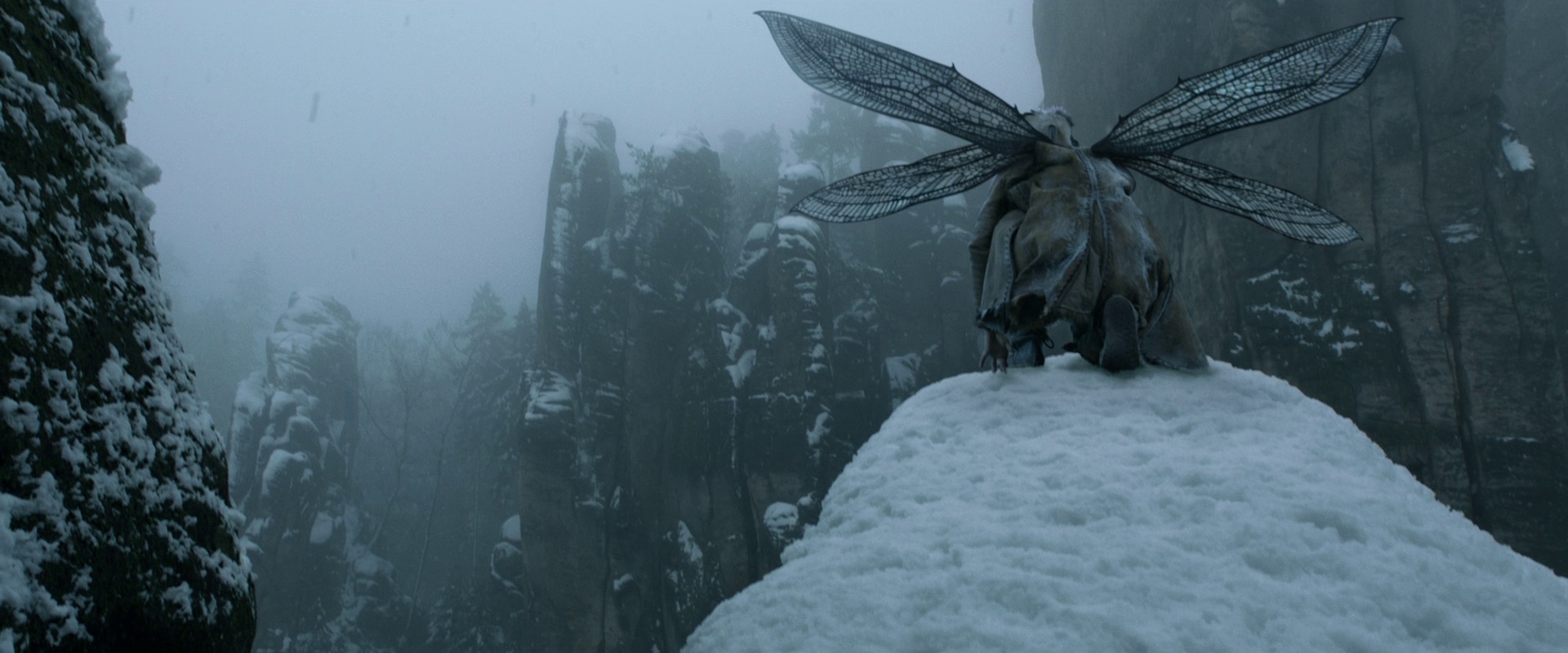
Cinematography of “Carnival Row” by Tony Miller.
Continue reading »
Continuing the ongoing series of interviews with creative artists working on various aspects of movie and TV productions, it is my pleasure to welcome Learan Kahanov. In this interview he talks about collaboration between different departments, technological changes and breaking the political status quo in the world of storytelling, the multiple roles that a cinematographer must assume on set, and the importance of story. Around these topics and more, Learan dives deep into his work on “Madam Secretary” that is in the middle of its sixth and last season as we speak.
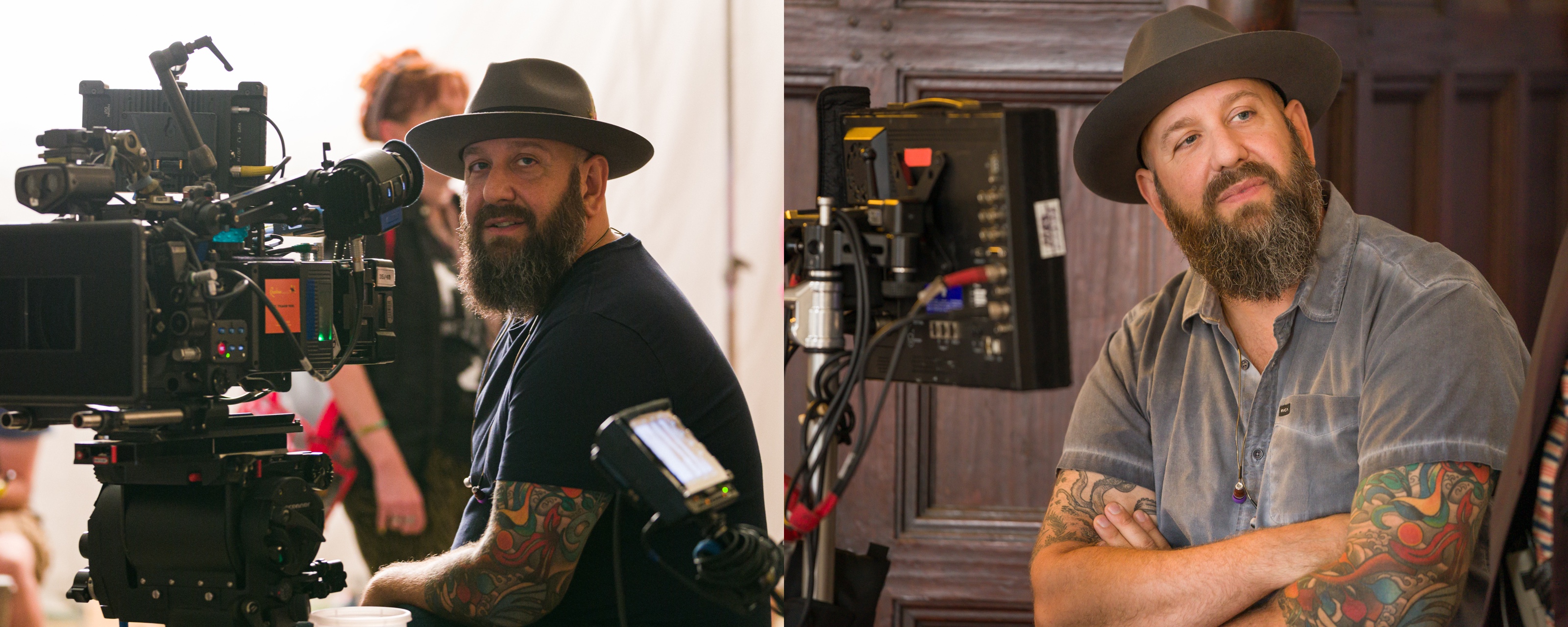
Learan Kahanov on sets.
Kirill: Please tell us about yourself and the path that took you to where you are today.
Learan: I was interested in the captured image since an early age. I played with cameras all through my school years. My mother is also a fine artist, and she went to art school when I was in middle school. So I found myself being dragged along to the darkroom as she did a minor in photography. While she was learning photography, I was learning photography. Eventually I got a camera and started shooting black-and-white stills.
After my mother graduated, she started teaching drawing classes. We had our own art studio, and she would hire models that would pose for her drawing classes. She offered me the opportunity to take pictures and I could do my own stuff.
I was always interested in pictures and imagery. I don’t actually remember the moment where it clicked that I wanted to be a filmmaker. Throughout growing up and in high school I worked at a Children’s Museum and I taught other younger kids how to do photography and photograms. Then I got into some video work and taught the kids how to use the video cameras, and we would make these little short films at the Museum. That’s what really sparked my interest and I quickly realized that filmmaking was the direction I wanted to go.
I went to my state school for photojournalism in order to create a portfolio to get into NYU film school. When I was at NYU, I went right away to all the professors and said that I have no interest in directing. I just wanted to do cinematography.
I think a lot of it came out of how I was raised. I’m first-generation American to Israeli parents; my mother being a fine artist and my dad didn’t have a typical job either. It was seeing the world in a little bit of a different way than the people I grew up with.
I wasn’t necessarily ever a cinephile or someone who studied film as a kid. But I was always interested in the emotional response of an image and the way an image could tell a story. That’s my memories of it as a kid and as a young adult.
When I was at NYU I shot as many films as I could. I also worked as an electrician and eventually a gaffer in the indie world in New York because I was always interested in lighting. Even the photography I was doing in high school and in college was a little more towards the art side of photography rather than the documentary. I was never the guy who walked around the street with a camera and did street photography or documentary style. For me it came more from a narrative storytelling point of view, and that’s why it was an easy transition to try to get into movies, music videos and commercials, and less documentaries.
My early career was basically shooting as many student films and indie films that I could, as well as working professionally as a gaffer. I always felt that I won’t always end lucky enough to have a gaffer who knows how I want things to be lit, so that was my angle – advancing through lighting.
Around 1999-2000 I decided to make a strong push to DP full-time. It was a lot of hard work, a lot of “no”‘s, a lot of low budget projects that did not make me a lot of money. I ended up shooting about a feature a year for eight years, and around 2007 I got into the Camera Union in NY. That parlayed into other television work, commercials and bigger projects, leading me to where I am today – finishing up the sixth season of “Madam Secretary” on CBS. I started the job as A-camera operator and additional cinematographer, and then on the third season took over the show fully.
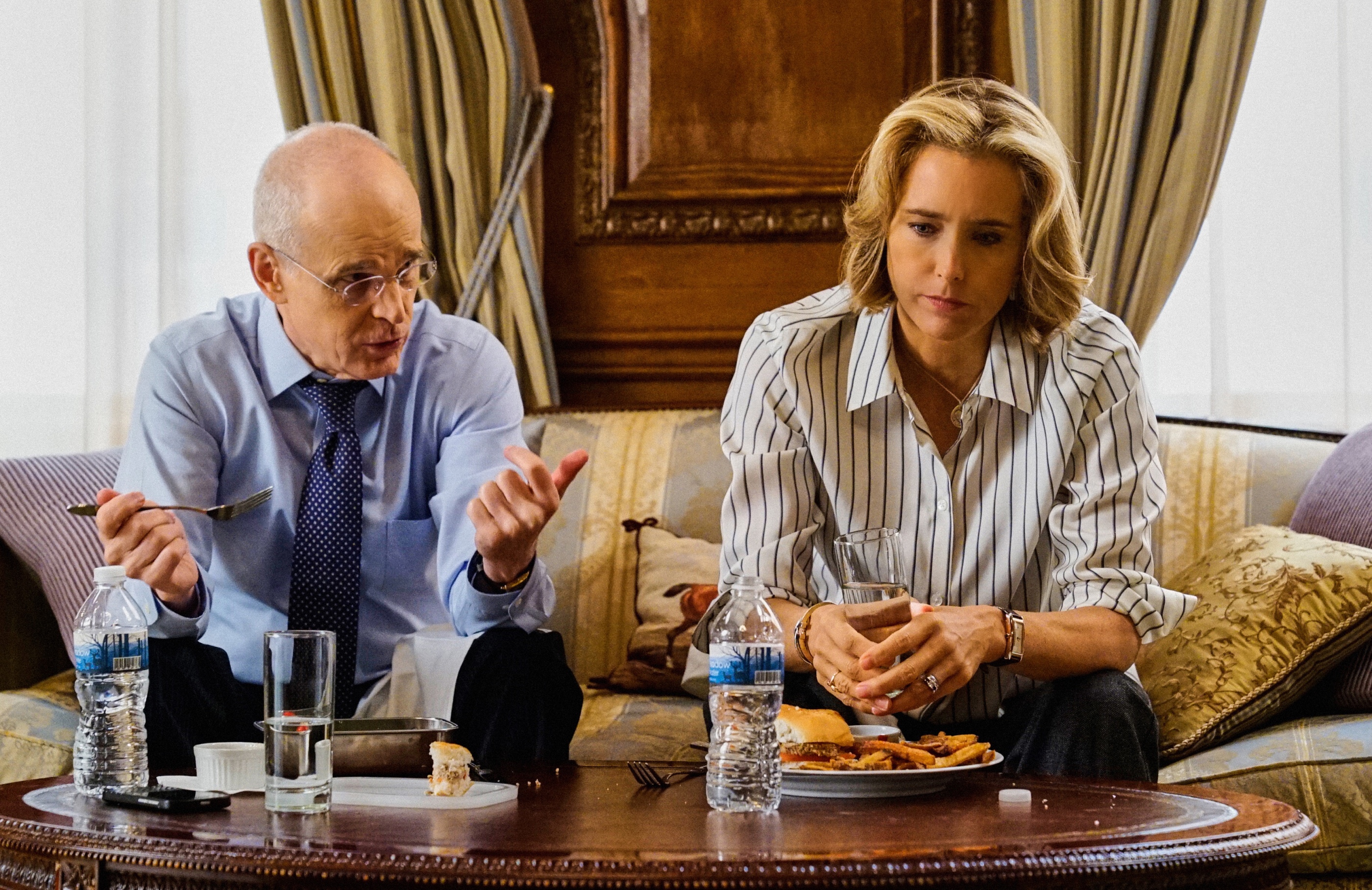
Cinematography of “Madam Secretary”. Courtesy of CBS Broadcasting.
Kirill: If I went to your set today, what do you think would be the most unexpected or surprising thing for me as a viewer that knows only how the final product looks?
Learan: I wouldn’t say this would be specific to my set, but to film sets in general. It’s the amount of choreography that goes into making that final product, and the dance that we all do between the departments. Everyone has this special skillset that can work beautifully in tandem with everyone else to create this piece of art, or piece of entertainment, or whatever that product might be – however artistic or commercial you might want to call it. It’s amazing to see that team work, that collaboration in an industry that is far from democratic.
Filmmaking is not a democracy in its hierarchy, but it can’t be done without collaboration. It’s quite a beautiful thing how there’s all these levels of workers, bosses, managers and artisans – from producers to the directors to the production designers, and all the way down to the set technicians and PA’s. On the best jobs there’s such a synergy and a symbiotic way of working, it’s truly magical. You have to pull back the curtain to see how many people are involved, and how they relate to each other. It becomes a family.
We go to work and you become close, because you’re spending a lot of hours together. Often it’s more hours than most people do when they’re at their everyday job working in an office. It becomes a family, and I think that surprises a lot of people. It’s often separate from the final product of what are we creating. It’s that passion for creating something that everybody shares, whether it’s someone whose family’s been in the industry for many generations to a person like me who has no family in the industry, somebody who just decided I’m gonna go for it and break in.
Kirill: Looking at these first 20 years of your professional life, do you think it’s easier to get into the industry nowadays? The cameras are getting better and cheaper, and there are so many productions of so many different sizes. Does it feel like if you were starting today, maybe it would have been accessible?
Learan: A few months ago I went and talked to a class at School of Visual Arts in New York. I talked about my career, how do you break into the industry and what have you. My take is that it’s definitely more accessible these days to produce something- short film, TV pilot, feature film. It’s definitely easier and more accessible to create something.
That being said, I don’t know if it’s any easier to get into the industry. I think the industry still in many ways, both the good and the bad, is stuck in its ways of how things are produced, funded and distributed. You have all these streaming services, digital acquisition channels and digital distribution channels. There’s an increase in need for content, an accessibility for content and a yearning for content. My middle schooler son can make a short film and put it on YouTube for anyone who wants to see.
But as far as the industry is concerned, I think it’s still as difficult. The politics have not gone away – the who you know, and the where you’re from, and the where you’re going. There’s a lot of talent out there and talent alone isn’t going to get you there. In that sense the industry hasn’t changed that much, as far as breaking in.
The great part about these times is the accessibility of it all. The cameras are so accessible. You can do nonlinear editing on a laptop, along with sound design and visual effects work. It’s opened a lot of doors for a lot of young filmmakers, and for not so young filmmakers who want to break into the business later in life. The question is how do you “make it”. There’s a little bit of timelessness to how tough things still are.
I do think that’s true with any creative industry, whether it’s filmmaking, music or dance. There’s the old saying of where talent meets opportunity. That’s still true to this day. The great thing about where we are now is that because of the accessibility of the cameras and the gear, a lot more talented people have a voice, and can put their ideas and their stories out in the world. That was a lot harder to do 20 years ago, just for the simple fact that we all shot on film. There weren’t that many video cameras, especially any video cameras of high quality. It was a more select group of people who had that access.
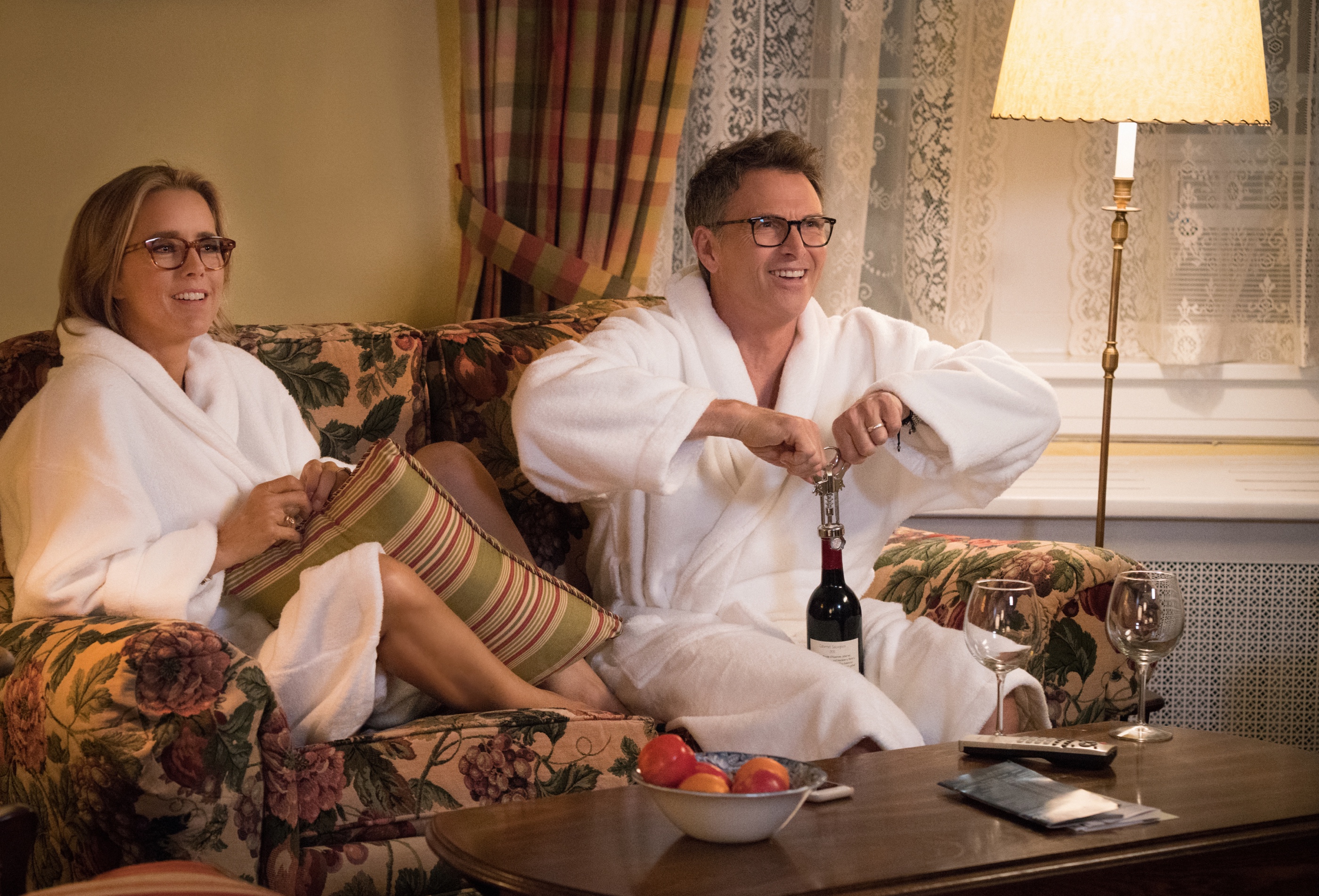
Cinematography of “Madam Secretary”. Courtesy of CBS Broadcasting.
Continue reading »
Continuing the ongoing series of interviews with creative artists working on various aspects of movie and TV productions, it is my pleasure to welcome Carolina Costa. In this interview she talks about technology changes in the field of cinematography, discovering new voices as a viewer, the balance between technical and artistic aspects of her craft, and how she chooses her projects. In between these topics and more, Carolina talks about her work on this year’s “Babenco” and “Hala”.
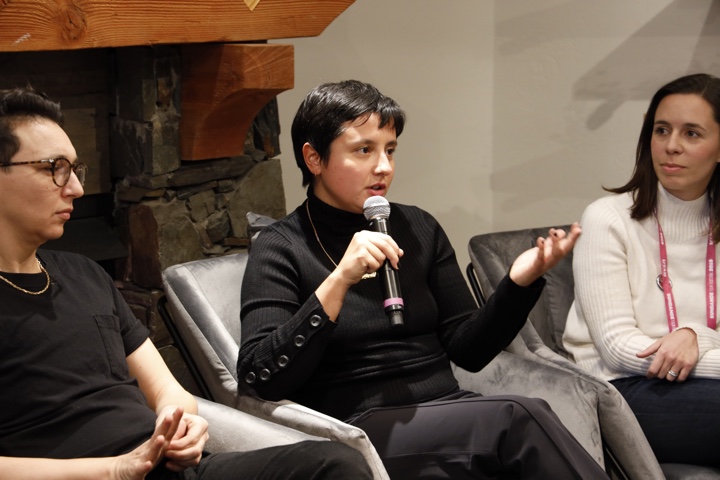
Carolina Costa on an AFI Panel at the Sundance Canon Creative Studio.
Kirill: Please tell us about yourself and what brought you to where you are today.
Carolina: My name is Carolina Costa and I’m a director of photography. I’ve done documentaries, commercials and music videos, but I really like to focus my work on narrative fiction work. It’s interesting because it takes me back to when I first started as a journalist.
I’m originally from Brazil and I’ve been moving around the globe. I lived in England for a few years, then in Los Angeles and now I’m in Mexico. Back when I was in Brazil, I studied journalism and I worked as a photojournalist. Still photography was my first contact with the world of capturing image – I was photographing the reality around me. I grew up in Rio, right next to one of the biggest favelas, and it’s a violent city. My first interest was to portray the kids around the area.
Moving into motion pictures came from that as well – through the frustration of not being able to change my environment. I felt like movies could do that, more than what I was doing with photojournalism. I felt like people could go to the theater and forget how bad their lives were, or they could go and connect to a character on the big screen and through that experience they could deal with something that is a little harder in their life.
When I first moved to London I started working as a camera assistant. Then I moved up the ranks of the camera department and eventually graduated to being a director of photography. Then I went to do my Master’s degree at the American Film Institute, and that was the moment I saw myself as a director of photography with all the necessary tools.
Kirill: Is there anything in particular that you remember from being on set in your first couple of productions?
Carolina: The other day I found the photos from the first film set I worked on as a camera assistant, and I looked so serious. I think I was just nervous, trying to do a good job. I knew it was going be a long way to the top, with long hours and very little sleep. You’re fighting for a piece of the spotlight, because there’s so many good people out there.
It wasn’t glamorous or anything. It was quite clear to me that it was a lot of hard work. When I started as an AC, the days were long and the nights were short. I’d catch a train then a bus, and would be the first one on set to clean everything. I’d sleep maybe three hours every night. There were days that I would question what I was doing, but it was clear to me that I wanted to be there.
I always tell people who start working with me, that you need to know if you really want to do this. There’s zero glamour to it [laughs], and it’s a lot of hard work. But I feel that if you truly have that passion, there’s just nothing like it. When I’m on set I’m truly myself. When I’m outside of set, sometimes I find it hard to find my footing. That’s also part of the experience. You accept the little sleep and long hours.
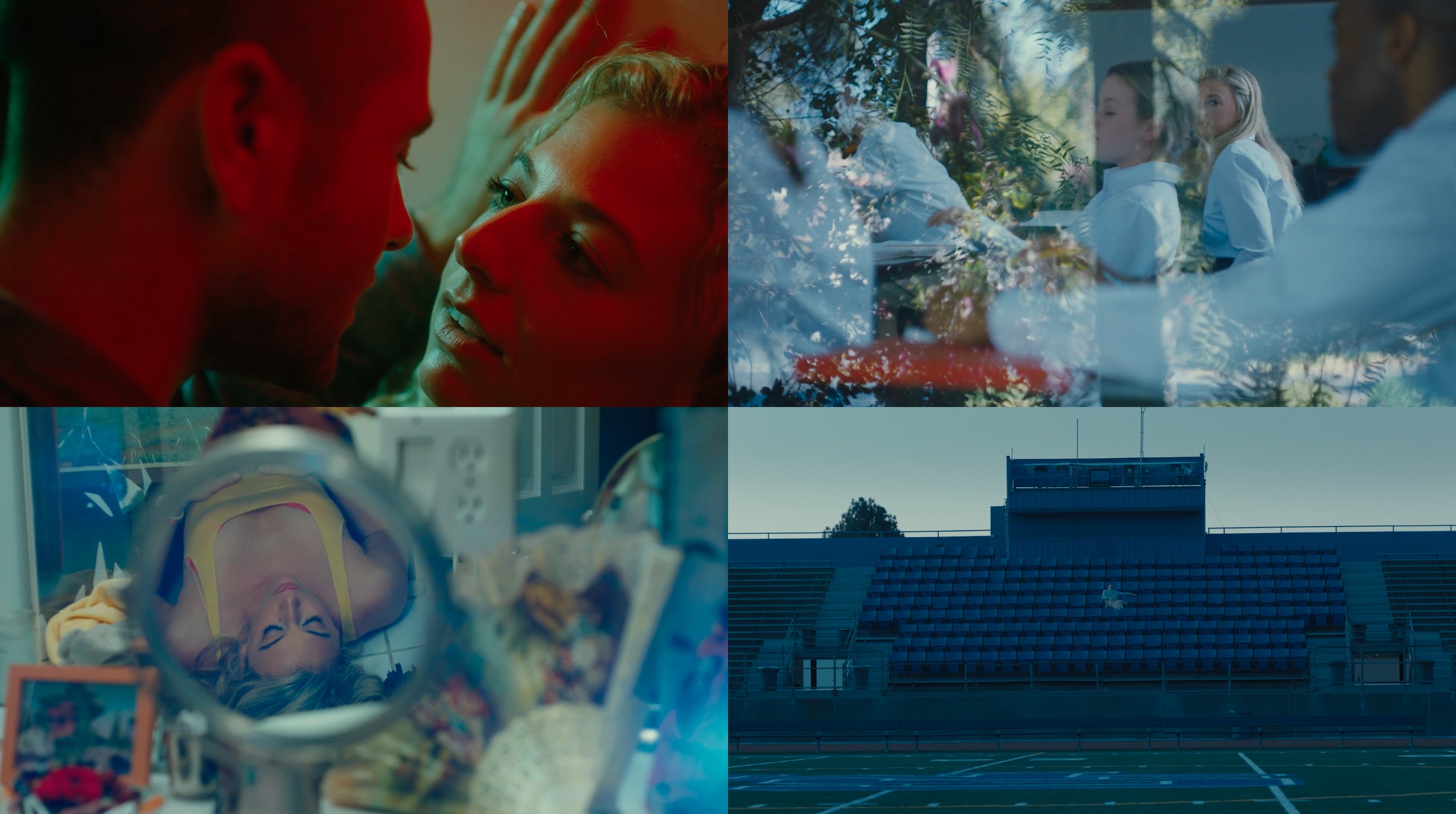
Cinematography of “Girl on the Side”. Courtesy of Carolina Costa.
Kirill: Do you think it’s easier to get into your field these days, as cameras are getting better and cheaper, and some people even shoot things with their phones?
Carolina: That’s really exciting. When I first started shooting music videos and shorts, it was right around the time when 5D, 7D and similar cameras came out. That new equipment had shallow depth of field and it was affordable. It gave freedom to someone like me that couldn’t go and shoot a short before.
Previously you would need to go to Fuji or Kodak, and beg them to give you some film. Then you’d go to a lab and try to persuade them to process it for you. One of my early shorts was done in a lab as a back-end of someone else’s production.
I remember that period when those cameras came out. I went out and experimented with shorts and music videos, figuring out how to light and do other things. That is still going on today. You can go with your iPhone and shoot something, and it is valid.
With all this talk about digital taking over, I thought that maybe voices we haven’t heard before would now be heard. Where I come from, the famous movies are all about the slums and the violence in those areas, but generally you never see a movie that is made by someone actually from that place. It’s usually middle class and upper middle class talking about those social circumstances.
That’s what excited me most about those cameras becoming accessible. I was looking forward to those new voices coming out. But very little is coming out of it, and I can’t put my finger on why. You have more cameras and they’re cheaper, and people can experiment, but I still feel that it’s an industry that is reserved for very few people, and that hasn’t changed. I wish the excitement about the new digital format had pushed the other side as well, but it hasn’t really. I feel like it’s a shame, because it offers that possibility.
Recently I saw a guy here in Mexico and he sent me a cut of a documentary he shot on his phone. It’s crazy. He filmed real narcos, and he was right in the middle of it with the guys, the guns and everything. I haven’t seen anything like it. Of course, there’s no way you could bring an actual film camera and lights. We talked about how he could make the cinematography better and more interesting, but I told him that he shouldn’t listen to me. He should go and do what he’s doing.
It’s generating interesting projects and I wish there were more of them.
Kirill: From my perspective as a viewer, sometimes I ask myself how do I discover those new voices. It can feel a bit overwhelming and fragmented to navigate the landscape of visual storytelling, be it features, documentaries or shorts. How do you go about it as a viewer?
Carolina: I suffer like everybody else. We see the same billboards and the same posters. I feel like everybody watched “Roma” because there was so much advertising for it [laughs]. You couldn’t miss it, it was stuck in your mind. I’m human, and I’m part of the same society.
I have friends in many places in the world. The other day I sat down with a friend from Iran, and I asked them to give me names from Iranian cinema. Then I spent the whole weekend watching their work. Afterwards, I reached out to friends and colleagues from different places, cultures and upbringings. That’s how I find things to watch.
I’ve also been doing master classes, and I feel that the contact with younger generations has exposed me to a bunch of cool stuff that I would not necessarily be in tune with.

Cinematography of “How To Make a Bomb”. Courtesy of Carolina Costa.
Continue reading »
Continuing the ongoing series of interviews with creative artists working on various aspects of movie and TV productions, it is my delight to welcome Natalie Bronfman. In this interview she talks about what costume design is, creating a subconscious expression through color and shape, the meaning of color and how it carries across culture and time boundaries, and her approach to creating costumes for characters in stories she works on. Around these topics and more, Natalie dives deep into her work on the meticulously designed third season of “The Handmaid’s Tale”.
Kirill: Please tell us about yourself and what brought you to where you are today.
Natalie: Originally I wanted to be an opera singer, but even though I was good, I wasn’t the best. I already knew how to draw and sew, and I tried to figure out how I could stay in that environment. I ended up studying costume, first through fashion & costume at school, I did a few runway shows and then going to costume in theatre & film.
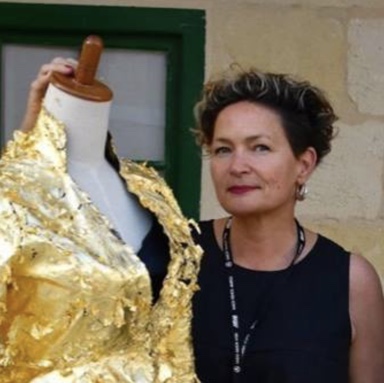
Natalie Bronfman with a Gold-leaf
Redingote at MFW 2018
I started making theater costumes when I was about 12 years old. In high school, I made prom dresses for other girls [laughs] as well as for any plays that we had. I started to study costume at Parsons in New York City. It was predominantly a fashion program which I didn’t really love as much as costume which I wanted to specialised in, and so I found another school in Rome, Italy. I already spoke three languages, so I learned a fourth one. Much of opera is written in Italian, and it was good to understand what they were singing. The language is so lyrical as well.
Kirill: How did you end up in the world of screen story telling?
Natalie: In theater studies you learn costume and sets, from blueprints to completion. When I graduated, I worked doing interiors for a while. I had big clients, many of them multi-million dollar projects, and with that comes a daunting payment schedule. You pay your crew, but you yourself are not being paid very much, or sometimes you have to wait 90 days. It wasn’t a sustainable way of living.
I applied at IATSE here in Toronto, and the next day I got called. I started from the bottom, and worked my way up. I’ve done all the positions in the costume department.
Kirill: Is there still anything surprising or unexpected that you come across when you join a new production?
Natalie: Every production is new. I love getting a new script. “The Handmaid’s Tale” is a phenomenal project. It’s one of the true design shows that I’ve ever worked on – everything built from scratch. It is rare, mostly because of the budgets that we have to work with and often the time factor. If you’re given very little money or very little time, you have no chance to build anything.
When I tell people what I do for a living, they have a different conception of what it actually is. A lot of it is psychology, more so than design, particularly because you’re dealing with actors. Not only are you dealing with the actors’ personal but also the psychology of the character in the story and you have to meld the two to become symbiotic.
I think that was what surprised me – how many other things I have to know, how much I have to delegate and how much I have to converse with people besides actually designing. I would say that it’s almost 80% of it; that’s what surprised me most when I started in this business.
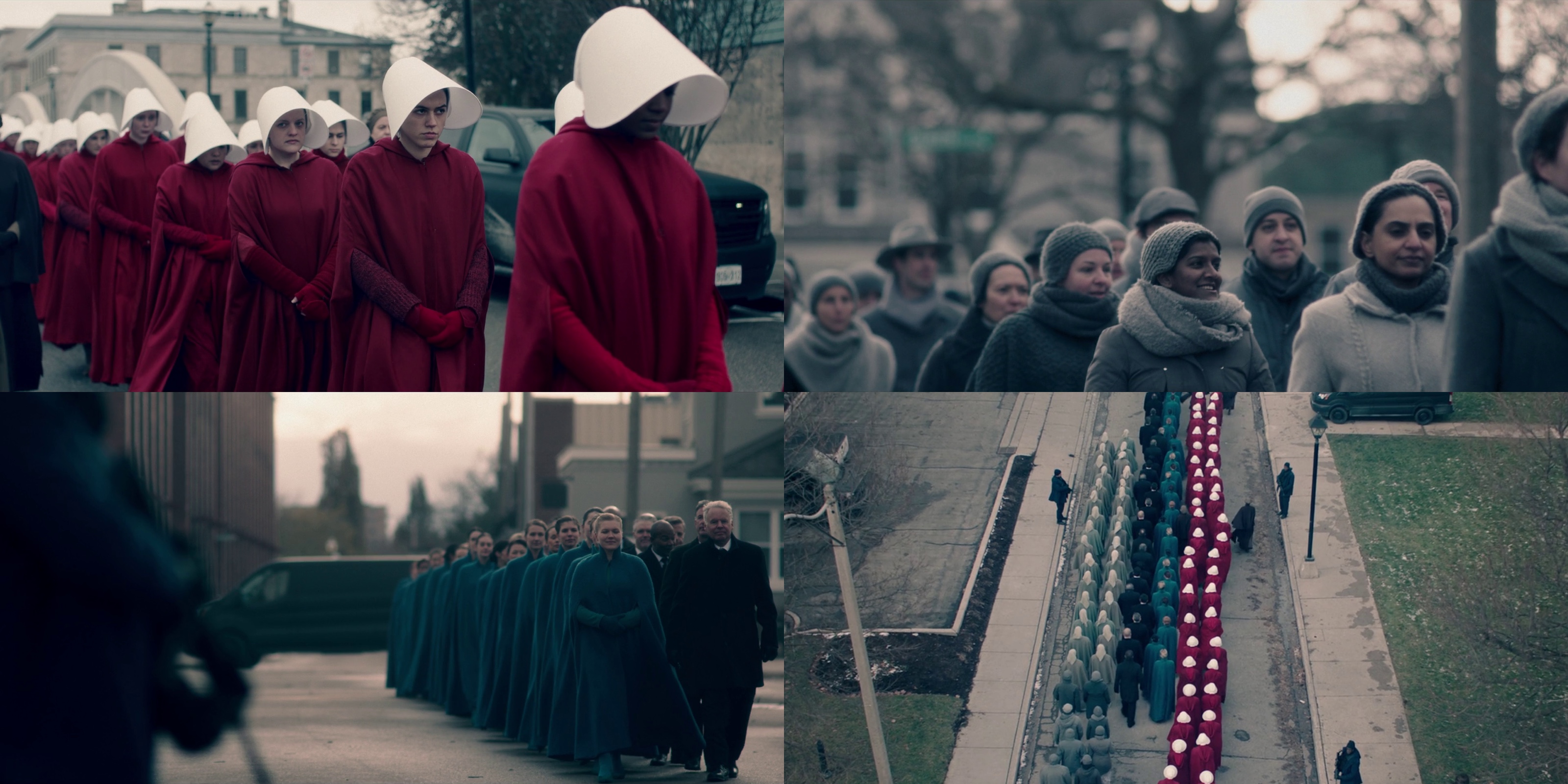
Costume design of “The Handmaid’s Tale” season 3. Baptism ceremony, outside.
Kirill: Staying away from “The Handmaid’s Tale” for a minute, do you find that people do not understand the complexities of costume design, especially in current-day productions? We wake up, we throw some clothes on and it feels a rather organic part of our lives. Probably not a lot of people invest time into thinking how they’re going to express themselves today.
Natalie: Many people have an opinion. That is good, but you have to figure out whose opinion you must follow. You can’t follow 10 people, so you have to narrow that down.
When you’re doing the costuming of a character, you have to be able to understand at a glance, where they are mentally, economically and socially. You have to capture all of that essence and clothe the person, so that in a nano-second you understand who they are.
Colors have a meaning. Shape has a meaning. Fabric itself has a meaning. You should be able to tell if this person is sad or depressed, is he a bad guy or a good guy. There are cliches as well that you sometimes have to follow, depending on the story. I usually try to think outside of the box though, because you want to surprise the viewer and keep them interested.
Kirill: Do you find that meaning of color, shape or texture translates well across cultural boundaries?
Natalie: It depends. In Asian culture, the color white is used for mourning. You must be knowledgeable of those cultural things, depending on what sort of the clientele or project you have. Purple is a big color in every culture, and it means something slightly different in different cultures and different parts of the world. One should study these things and be aware of them when planning a project.
We have big ceremonies in our lives – benedictions, marriages, deaths. Colors that are worn in these big events also influence our everyday lives. For example, it used to be that women would wear black when their husband passed away for the rest of their lives, but only in certain cultures. So again, it depends on the story and time era as well.
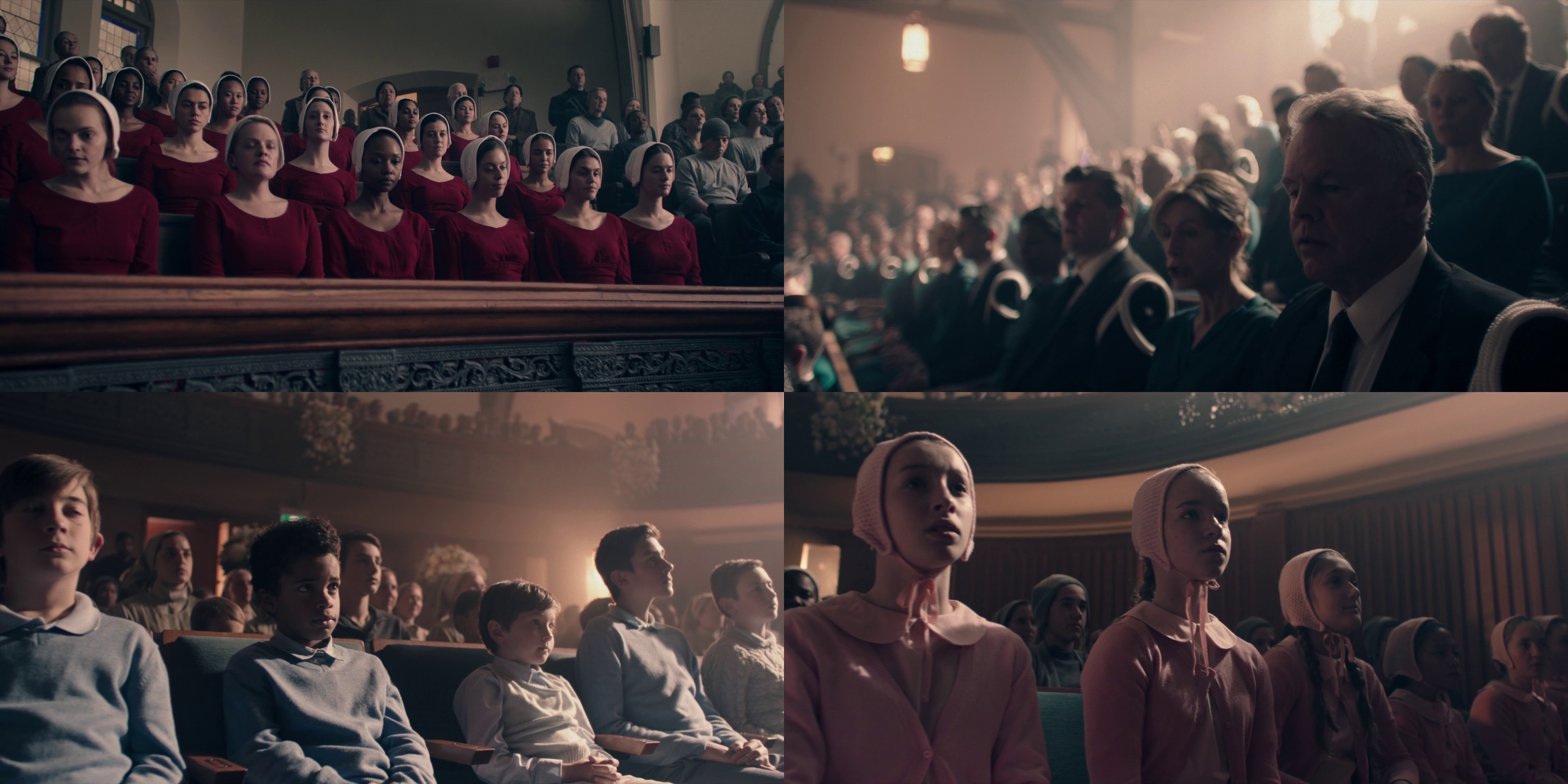
Costume design of “The Handmaid’s Tale” season 3. Baptism ceremony, inside.
Continue reading »
![]()
![]() I think that what it taught me was how to light with what I had. How to shoot handheld. What mattered and how to cut it in your head – work out what you needed to tell the story. You didn’t have a second chance or take. You really had to cover things very quickly and find the emotion and drama in how you shot those images. I found that it was a wonderful school for cinematography. All my heroes – Chris Menges, Roger Deakins, Robert Richardson had started in this way. (They all continue to insist on operating by the way).
I think that what it taught me was how to light with what I had. How to shoot handheld. What mattered and how to cut it in your head – work out what you needed to tell the story. You didn’t have a second chance or take. You really had to cover things very quickly and find the emotion and drama in how you shot those images. I found that it was a wonderful school for cinematography. All my heroes – Chris Menges, Roger Deakins, Robert Richardson had started in this way. (They all continue to insist on operating by the way).![]()
![]()
![]()